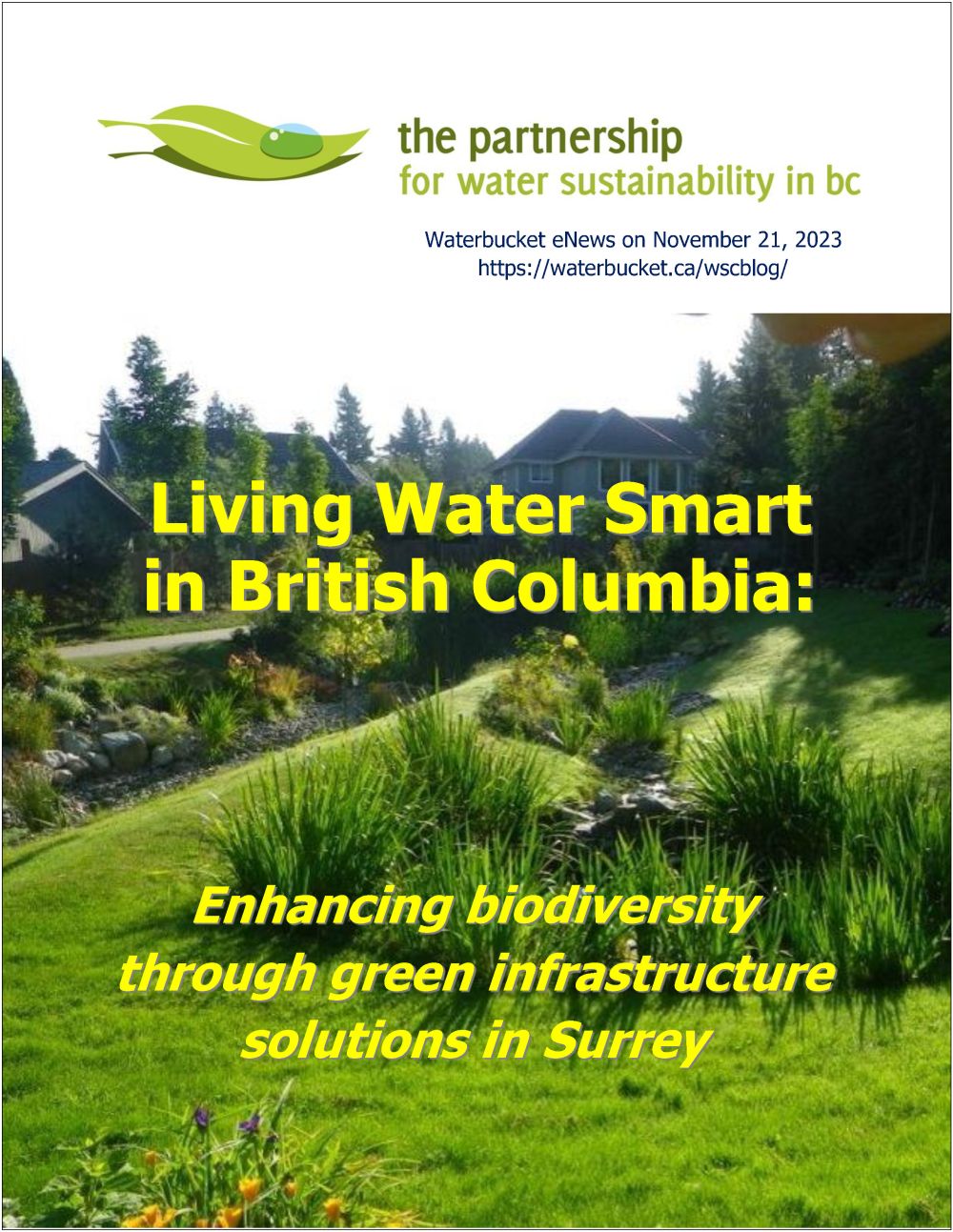GREEN INFRASTRUCTURE INNOVATOR: “Jim Dumont’s focus is on the analytical tools that produce the numbers that make the case for innovation,” stated Rémi Dubé, former Drainage Planning Manager with the City of Surrey
Note to Reader:
Published by the Partnership for Water Sustainability in British Columbia, Waterbucket eNews celebrates the leadership of individuals and organizations who are guided by the Living Water Smart vision. The edition published on November 21, 2023 featured Rémi Dubé of the City of Surrey. In the 2000s, he made significant contributions to the evolution of rainwater management and green infrastructure in British Columbia. A noteworthy contribution is the Fergus Creek watershed plan which was the genesis for Surrey’s Biodiversity Conservation Strategy and Development Cost Charges Bylaw.
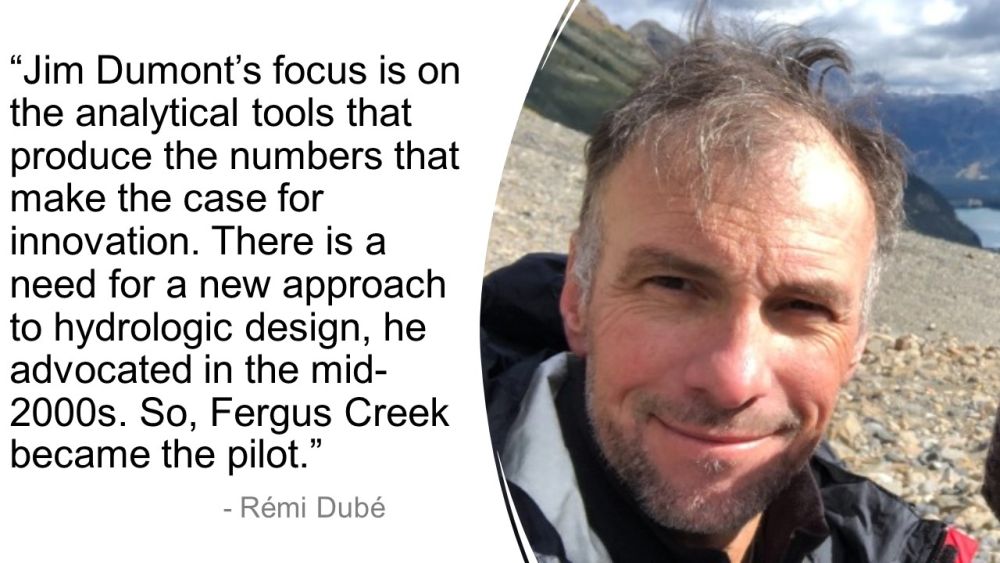
Fish Protection Act was a call to action and Surrey led the way in Metro Vancouver
- “Applied research by Richard Horner and Chris May at the University of Washington at the request of Puget Sound local governments gave us a science-based understanding of the correlation between land development and consequences for salmon.”
- “With that foundational understanding as a springboard, in British Columbia we went back to the basics to tackle the root cause of the problems which result when drainage water is intercepted and put into pipes. That was the genesis for the Water Balance Methodology.”
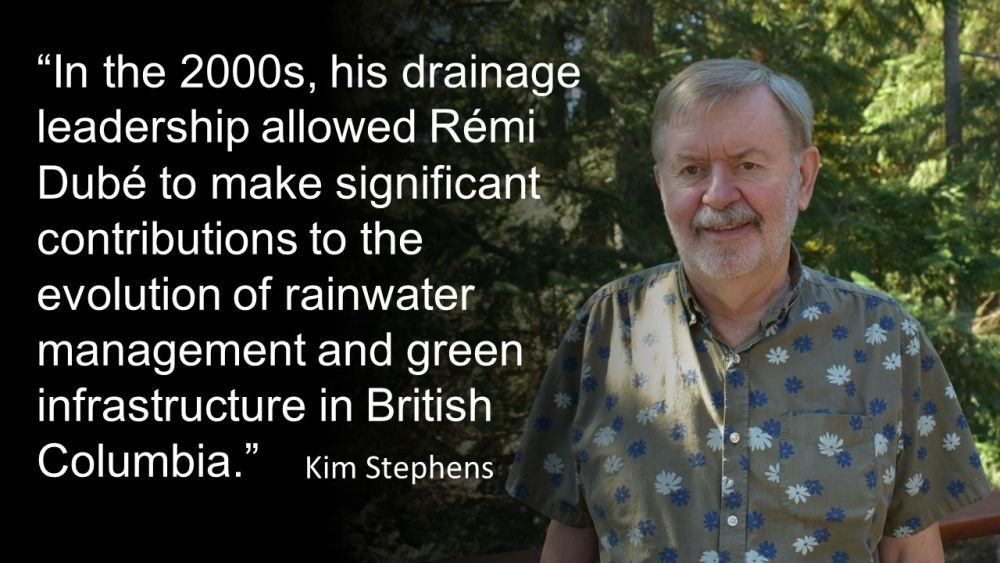
Fergus Creek: a plan with green solutions
“By the late 2000s, Surrey was poised to move beyond pilot projects to a broader watershed-based objectives approach. And they did as of 2008,” continues Kim Stephens. “From that bold leap forward emerged the framework for Surrey’s Biodiversity Conservation Strategy. The genesis for the strategy was the green solutions concept in the Fergus Creek plan. With adoption of the Biodiversity Strategy in 2014, Surrey established a Canadian first.”
“The innovation in the Fergus Creek plan flowed from collaboration between Surrey engineering and planning staff and with Jim Dumont, a water resource innovator and thought leader. In a nutshell, the team of Rémi Dubé and Jim Dumont pushed the boundaries of accepted practice.”
A focus on stream health
“Fergus was the first of the new generation of watershed plans,” recalls Rémi Dubé. “Our goal was to avoid a cookie-cutter approach that too often is an outcome of this type of multi-year program. Jim Dumont rose to the innovation challenge.”
“Jim Dumont’s focus is on the analytical tools that produce the numbers that make the case for innovation. There is a need for a new approach to hydrologic design, he advocated in the mid-2000s. So, Fergus Creek became the pilot for a runoff-based approach because duration of discharge links directly to stream health.”
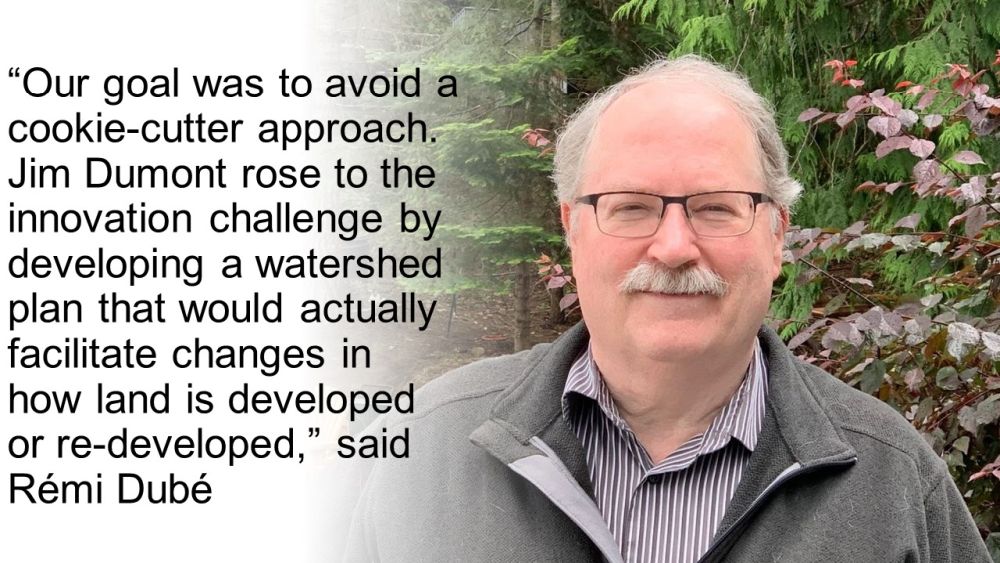
STORY BEHIND THE STORY: Enhancing biodiversity through green infrastructure solutions in Surrey – conversation with Rémi Dubé
“The City of Surrey has always run a lean operation. It is easy to know what is going on,” comments Rémi Dubé. “We are small enough that we can talk to each other and ask, how can we enhance stream corridors to maximize the biodiversity value they bring?”
Biodiversity Conservation Strategy
“Despite the population density that we have had to accommodate, and the ongoing growth due to the demand for housing, we have to set land aside for community liveability. The Biodiversity Conservation Strategy is pretty much a reflection of that need.”
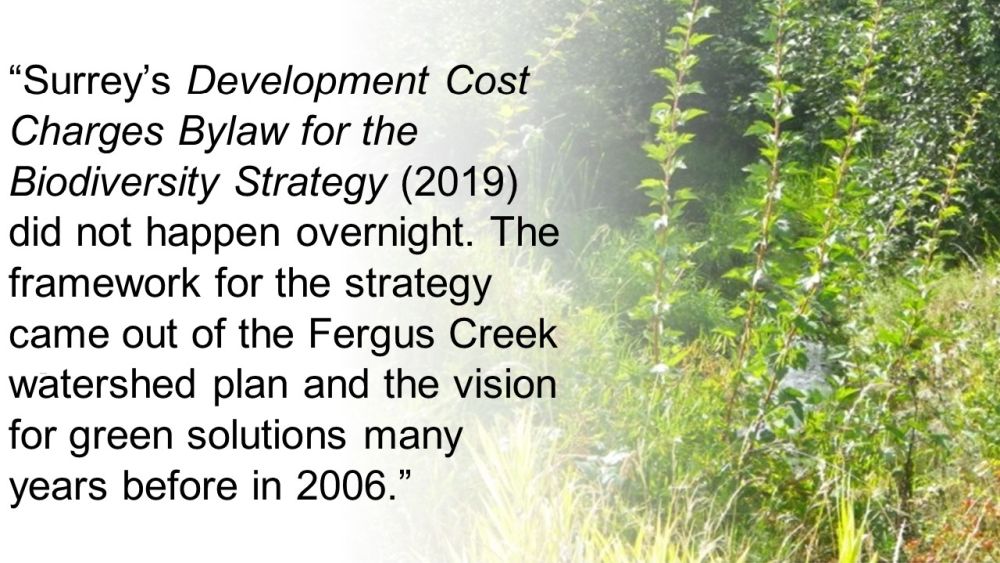
Strategy provides guidance for watershed actions
“My thinking about neighbourhood concept planning has been shaped by the look-and-feel of East Clayton as it was built compared to what we envisioned with the lofty goals for a sustainable community.”
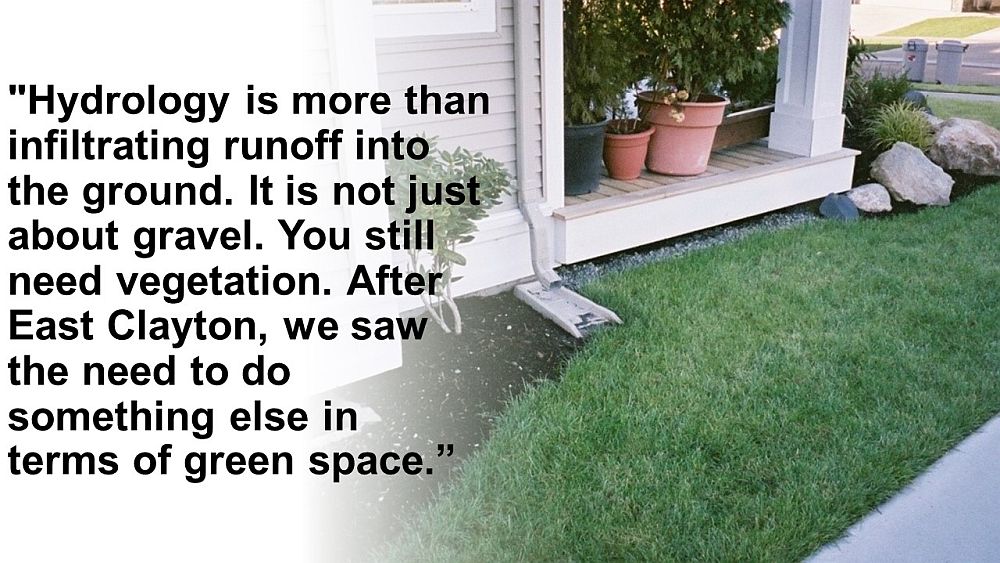
“There are many side benefits associated with creeks beyond moving water from A to B. You have to take that extra step in terms of land use planning. The intent of the Development Cost Charges Bylaw is to help acquire lands in the corridors that are identified in the Biodiversity Conservation Strategy.”
|
|
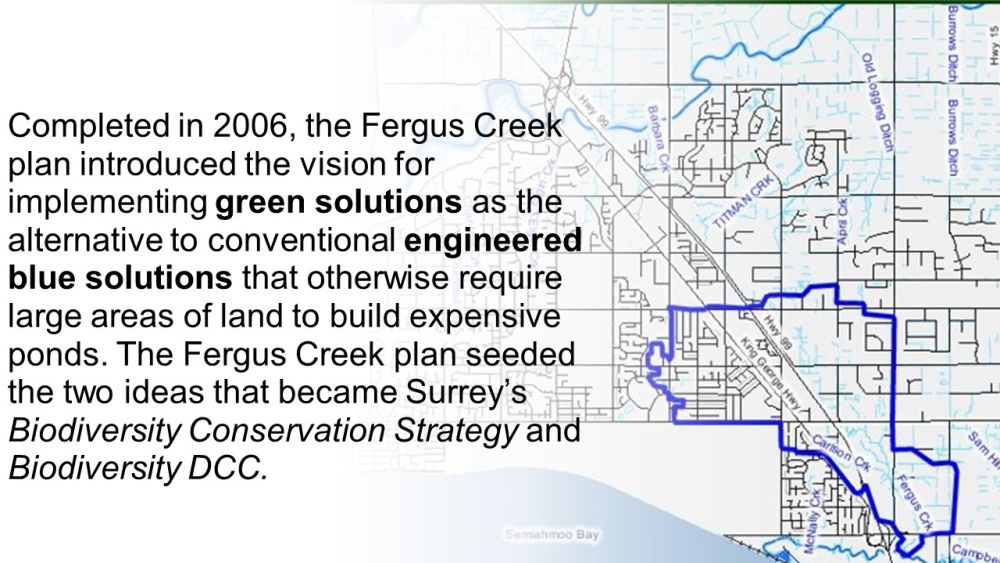
“The Fergus Creek plan showed why and how contiguous greenways make rainwater management easier and provide the land we need to actually achieve multi-purpose outcomes.”
“When Surrey hosted the second in the 2006 Metro Vancouver Showcasing Green Infrastructure Innovation Series, we said that the Fergus Creek plan is going beyond what is in the BC stormwater planning guidebook. The phrase stuck.”
How to implement more effective green infrastructure
“Fergus Creek was the inspiration for the Partnership’s Beyond the Guidebook Initiative. At the launch event in 2007, Jim Dumont and I led a mini charrette for engineers and planners.”
“The group exercise explored scenarios for green infrastructure implementation in the Grandview Heights Neighbourhood in the Fergus Creek watershed.”
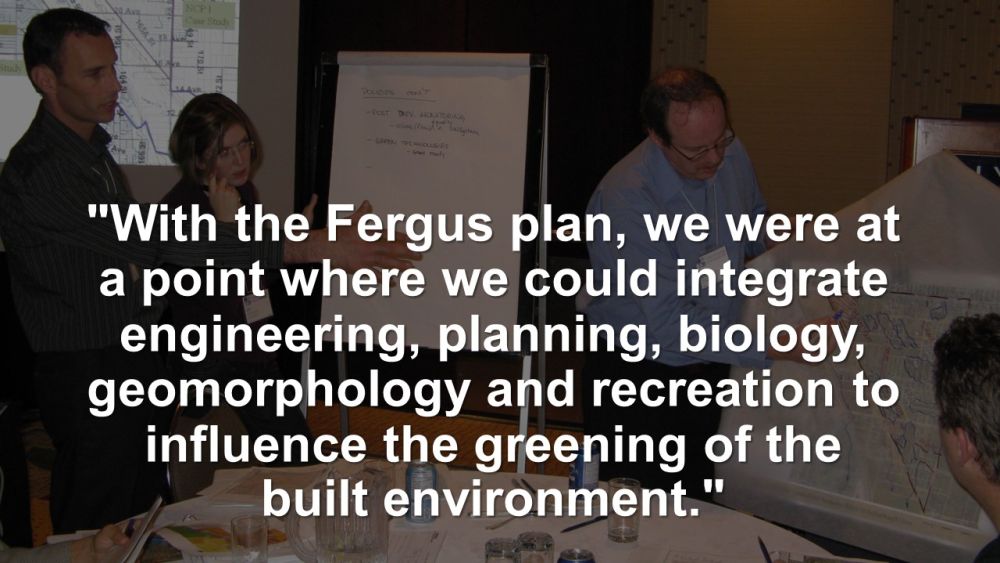
Getting green infrastructure built right
“In 2008, Surrey Council adopted the Surrey Stormwater Drainage Regulation and Charges Bylaw. Clause 9 in Part 5 gave us the language we needed to establish broader watershed objectives. The City had moved beyond pilot projects!”
“Getting green infrastructure built right – that was the theme for a regional forum that Surrey hosted in early 2009. We designed the forum to start a dialogue between policy-makers and project implementers. The program was built around the HOW question.”
It is a shared responsibility
“HOW will the City of Surrey get green infrastructure built right; and how will a consistent regional approach be achieved in Metro Vancouver? We approached these questions from a shared responsibility perspective.”
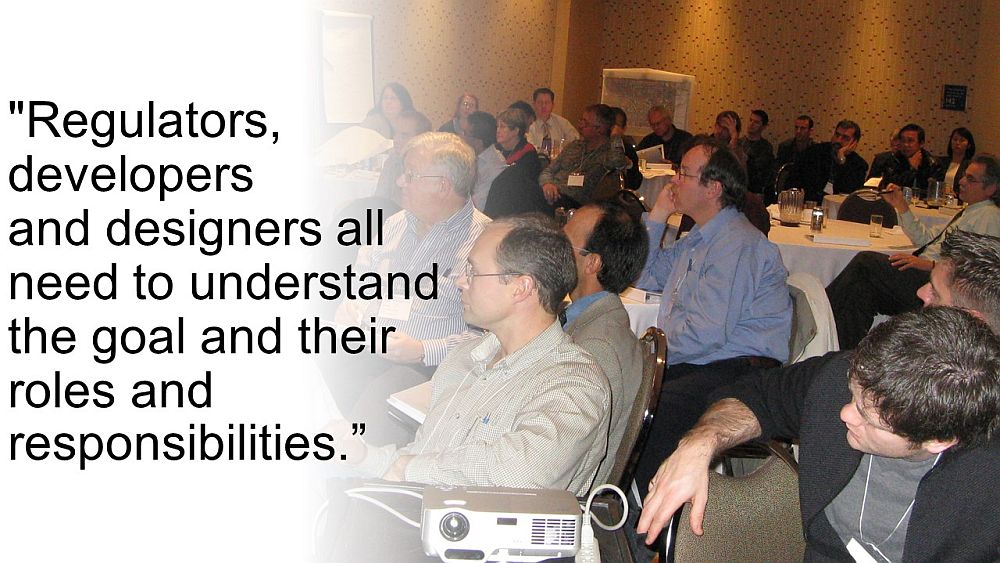
“Once we know what we want our watersheds to look like, the next step is to decide what the tools are that will get us there. Watercourses really do drive a lot of what we do in Surrey. “
“The number of natural resource interaction events that we have in Surrey is pretty exciting. We still have salmon runs, for example. It is fun for residents. Without the ALR and watercourses, the city would feel different. It would not be the place that it is,” concludes Rémi Dubé.

To Learn More:
To read the complete story, download a copy of Living Water Smart in British Columbia: Enhancing biodiversity through green infrastructure solutions in Surrey. The downloadable version includes a Bonus Feature – the complete interview with Rémi Dubé.


